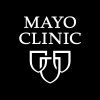
Effects of Airway Conditioning Devices on Ventilator Associated Pneumonia:a Randomized Clinical...
Acute Lung InjuryThe main hypothesis are: Passive and Active-Passive airway conditioning devices reduce the incidence of ventilator associated pneumonia Active-Passive airway conditioning devices reduce the incidence of endotracheal tube obstruction Nurses' workload is reduced with Passive and Active-Passive airway conditioning devices

LIPS-A: Lung Injury Prevention Study With Aspirin
Acute Respiratory Distress SyndromeThe primary hypothesis was that early aspirin administration will decrease the rate of developing acute lung injury during the first 7 days after presentation to the hospital.

A Trial to Evaluate the Impact of Lung-protective Intervention in Patients Undergoing Esophageal...
Acute Lung InjuryThe purpose of this trial is to determine whether low tidal volume during intraoperative one-lung ventilation could decrease the incidence rate of postoperative acute lung injury compared to "normal" tidal volume.

Soluble VE-cadherin in Prediction and Diagnosis of Early Postoperative Hypoxemia After Cardiopulmonary...
HypoxemiaARDS3 moreMore than 2 million patients worldwide receive heart surgery every year, majority of these surgical patients will undergo cardiopulmonary bypass. However, the incidence of postoperative acute lung injury due to cardiopulmonary bypass is still as high as 20% to 35%. According to clinical experience, the earlier lung damage is detected, the more successful the treatment will be. On the basis of traditional detection, the investigators found a new indicator, serum soluble vascular endothelial-cadherin, which are easy to obtain and have certain specificity. Importantly, they can predict postoperative acute lung injury within 1 hour after cardiac surgery. It is meaningful that this indicator can provide clinicians with early decision-making advice and immediate treatment for patients who may be at risk.

Oral Administration or Nasal Feeding of Huzhangxiefei Decoction for Treatment in Sepsis Induced...
Acute Lung InjurySepsisHypothesis 1A: Oral Administration or Nasal Feeding of Huzhangxiefei Decoction will significantly attenuate sepsis-induced systemic organ failure as measured by overall response rate. Hypothesis 1B: Oral Administration or Nasal Feeding of Huzhangxiefei Decoction will attenuate sepsis-induced lung injury as assessed by the respiratory rate and oxygenation index. Hypothesis 1C: Oral Administration or Nasal Feeding of Huzhangxiefei Decoction will attenuate sepsis-induced lung injury as assessed by chest x-ray scale score, Chinese Medicine scale score. Hypothesis 1D: Oral Administration or Nasal Feeding of Huzhangxiefei Decoction will attenuate biomarkers of inflammation (C-Reactive Protein, Procalcitonin), vascular injury (Thrombomodulin, Angiopoietin-2), alveolar epithelial injury (Receptor for Advanced Glycation Products), while inducing the onset of a fibrinolytic state (Tissue Factor Pathway Inhibitor).

Curosurf® in Adult Acute Respiratory Distress Syndrome Due to COVID-19
COVID-19ARDS1 moreSurfactant replacement therapy (SRT) improves oxygenation and survival in NRDS and some infant ARDS. SRT was tried in adult ARDS with conflicting results. Research by Filoche and Grotberg helped to understand the failure of previous clinical trials and yielded a strong scientific rationale for SRT success, now allowing to design a new administration protocol for SRT in adults, to be tested by this clinical trial in COVID-19 adult ARDS patients. Patients will be randomized to receive either a bronchial fibroscopy alone (with aspiration of secretions) or a bronchial fibroscopy with administration of 3 mL/kg of a solution of poractant alpha diluted to 16 mg/mL and distributed into each of the 5 lobar bronchi.

Effect of Treatment With Stress-Doses Glucocorticoid in Patients With Acute Respiratory Distress...
Acute Respiratory Distress SyndromeAdrenal InsufficiencyThe purpose of this study is to see if stress doses of hydrocortisone improve early outcome in patients who are in early stage of ARDS and with relative adrenal insufficiency.

A Validation/Interventional Study on Stress Index in Predicting Mechanical Stress in ARDS Patients...
Respiratory Distress SyndromeAdult30% of ARDS patients ventilated according to NIH protocol presents CT scan evidence of hyperinflation. Functional analysis of pressure-time curve (Stress Index=SI) has been shown to identify this condition in experimental settings. We tested the hypothesis that the SI is an accurate predictor of mechanical stress due to overdistention in ARDS patients.

Sigh Ventilation to Increase Ventilator-Free Days in Victims of Trauma at Risk for Acute Respiratory...
Acute Respiratory Distress SyndromeA randomized, concurrent controlled trial to assess if adding sigh breaths to usual invasive mechanical ventilation of victims of trauma who are at risk of developing ARDS will decrease the number of days they require invasive mechanical ventilation.

Comparison of Three Scores for Ultrasound Assessment and Monitoring of Pulmonary Aeration
AtelectasisPneumonia4 moreThis study is designed to compare three ultrasound-based aeration scores that were previously validated in specific populations, and to assess their correlation with computed tomographic measurement of pulmonary aeration in a population with different pathologies. Hypothesis: The "Loss of Aeration Score" will be more accurate than a simplified version and another widely used score, the "Lung Ultrasound Score".
